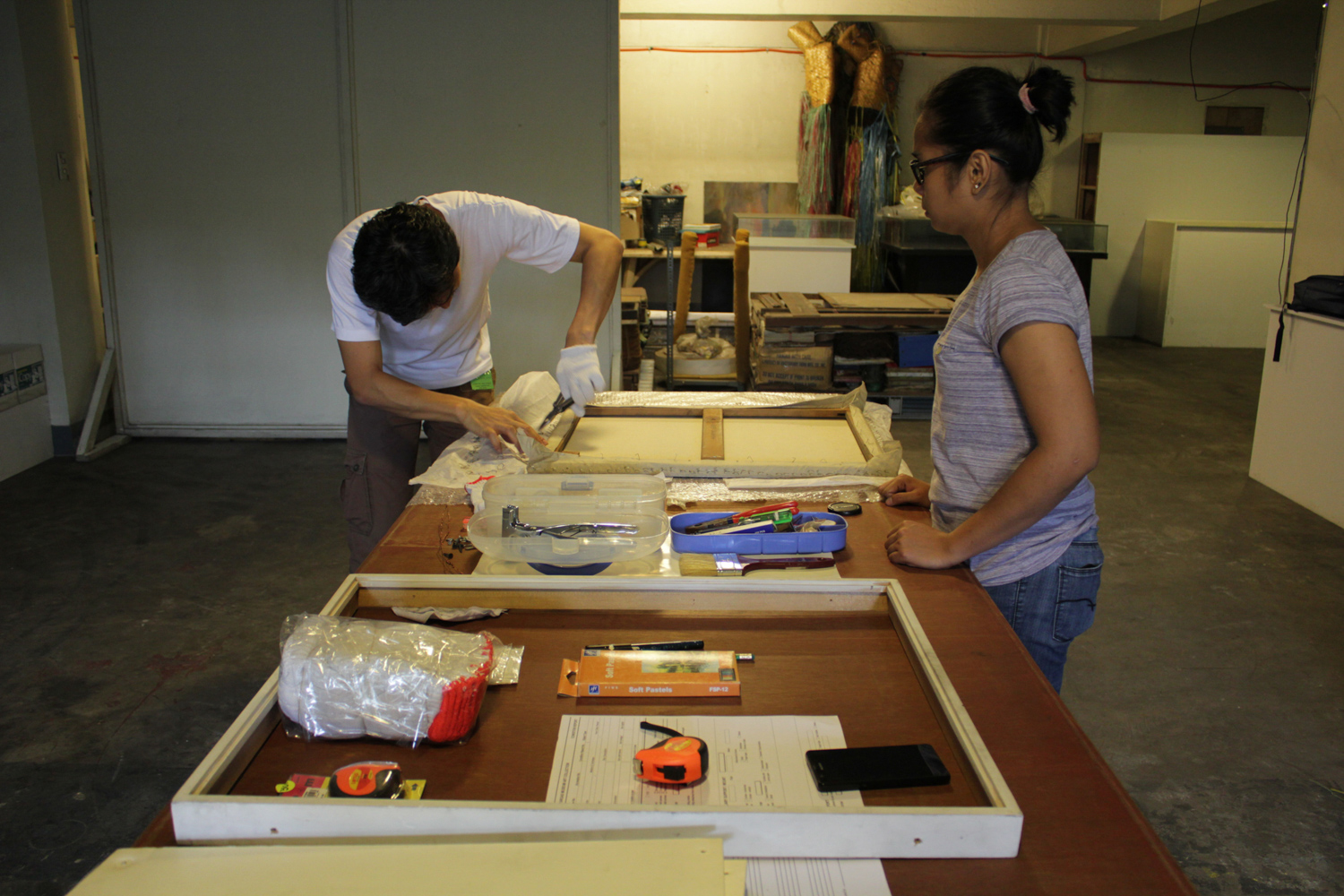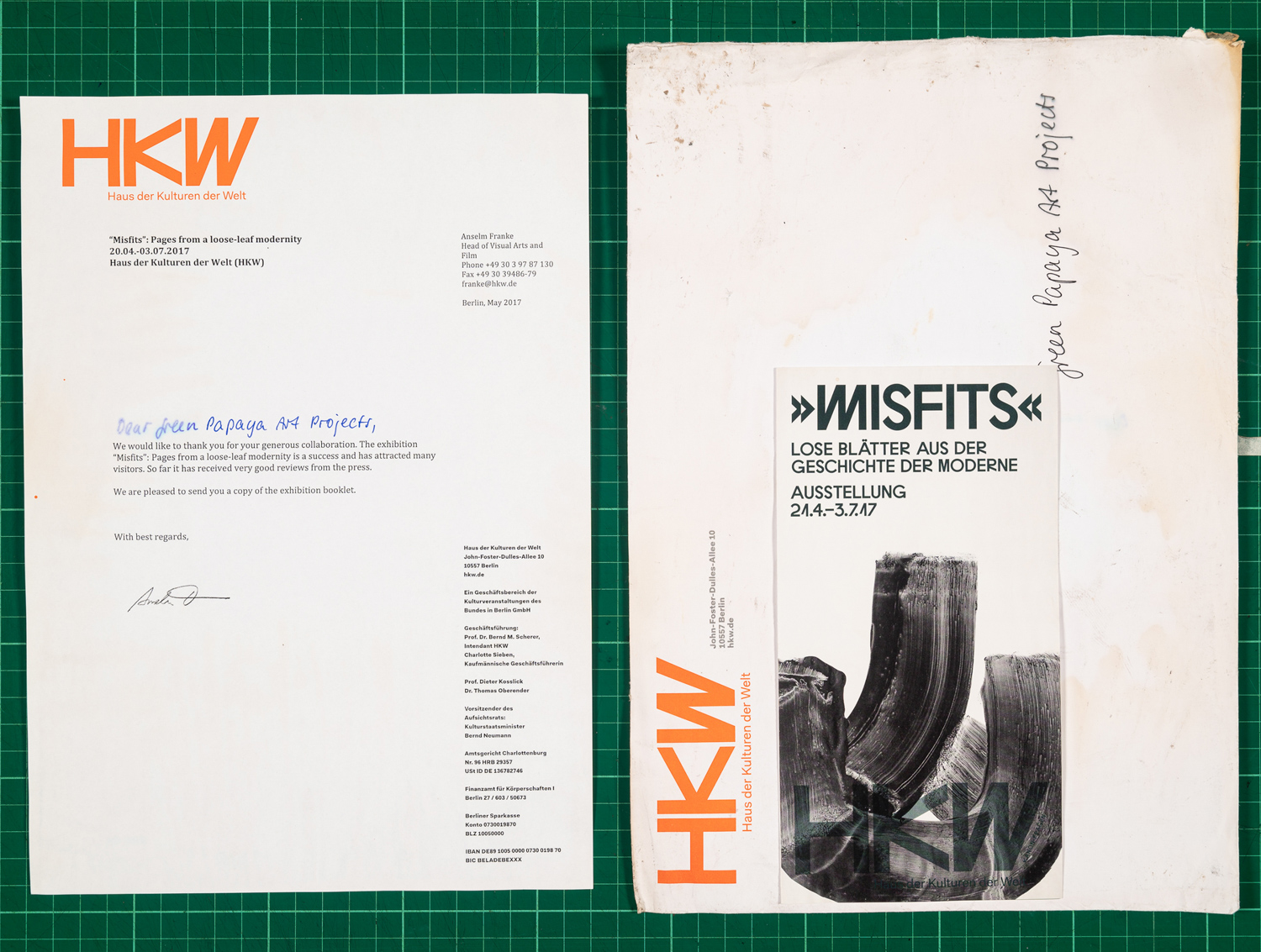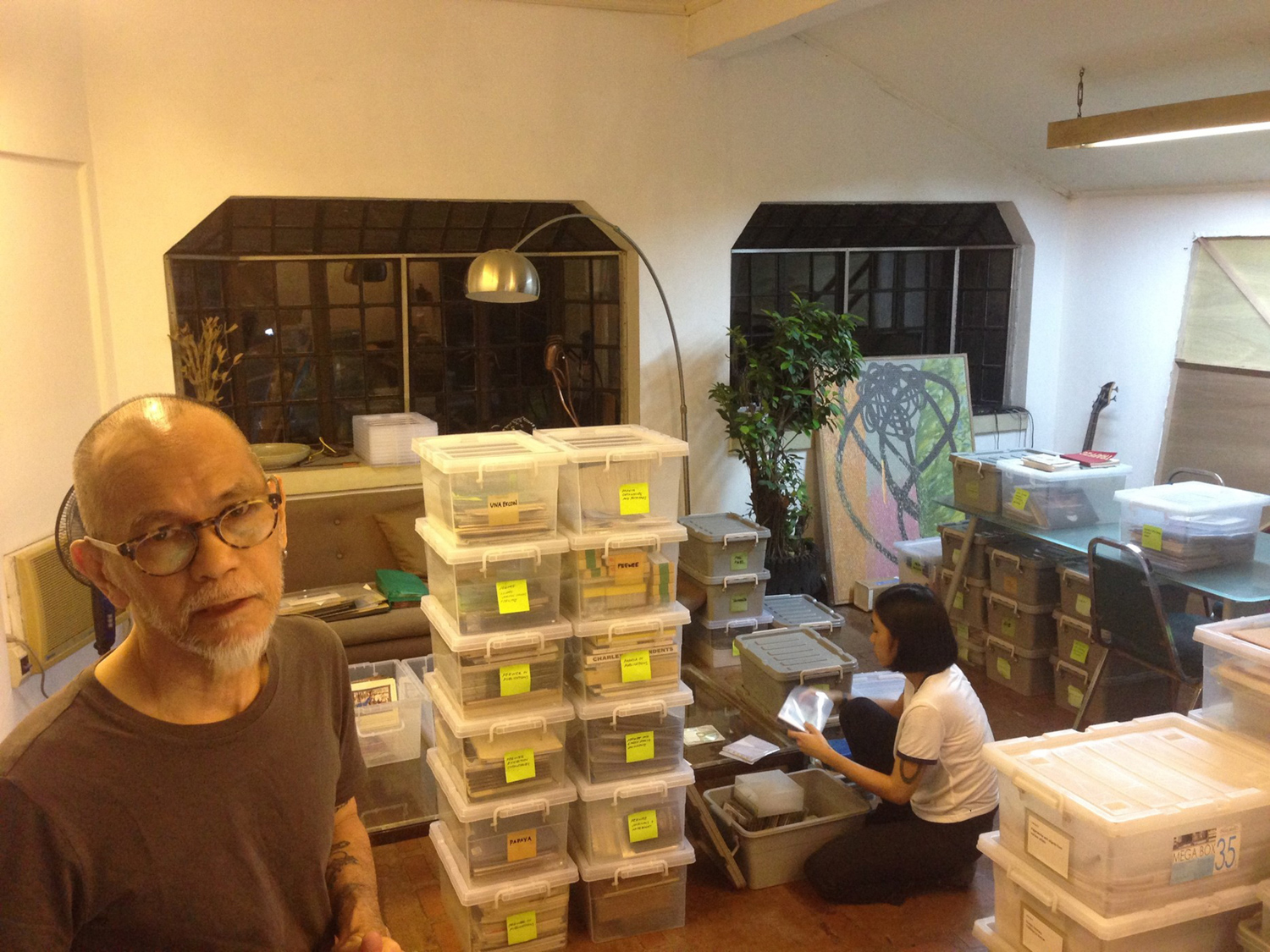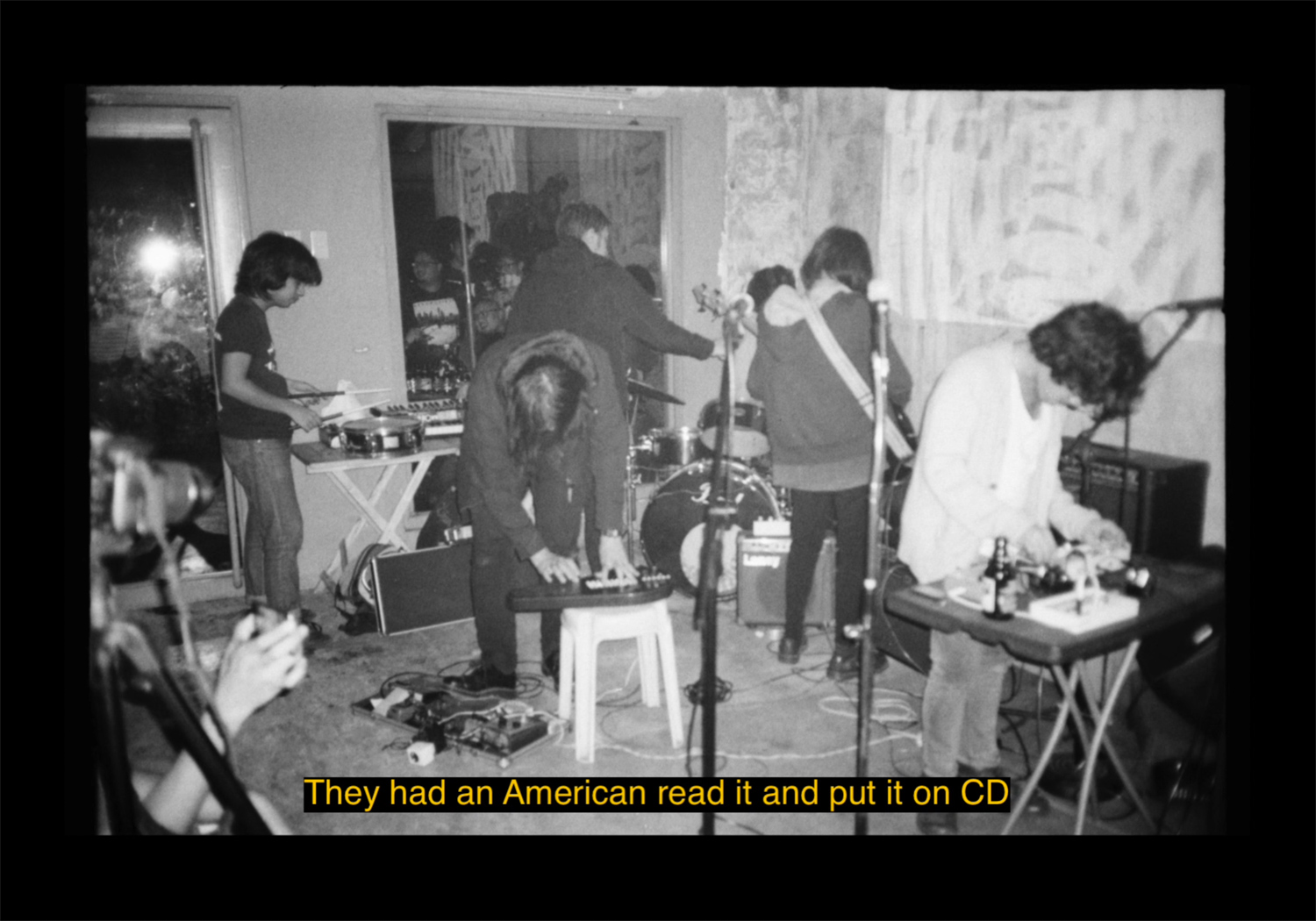Not A Tunnel, Maybe A Ring— 02.18.2021
Last February 3, Phase 1 of the Papaya archive was uploaded on the Asia Art Archive (AAA) website, a gargantuan project Papaya and AAA has been working on since 2017. For today’s Throwback Thursday, we would like to continue celebrating this milestone by sharing with you an essay written by artist and Papaya’s archivist Lesley-Anne Cao. In this text, Cao discusses how she started archiving for Papaya and how it relates to a broader interest in collective memory.
*****
My first paid gig out of art school was as a museum volunteer. My employment was part of the Working Artists Group’s project “Collections Management Service” at the Vargas Museum (December 2014 to January 2015), a "temporary department" that sought to facilitate the return of previously-exhibited artworks left unclaimed for one reason or another. With guidance from WAG’s Buen Calubayan and museum researcher Susie Garcia, volunteers Sam Luz and I learned basic handling, assessment, and documentation of artworks. When the exhibition closed, the project hadn’t finished; not all concerned parties had responded and the process stalled indefinitely.
From December 2016 to February 2017, I worked on artist and filmmaker Rox Lee’s personal archive with Merv Espina for an exhibition. Rox to me had a refreshing unsentimentality; some of his work he didn’t have copies of as he had given them to friends or lost them to natural and digital disasters and to the flurry of life and work. I digitized and inventoried his journals, magazine illustrations, comics, animation drawings, and mixed media works. These were some of the materials at the locus of the fire at Green Papaya in June 2020, some of which we had not had the capacity to digitize.
In between Vargas and Rox, I worked as part-time staff at the Bulwagan ng Dangal University Heritage Museum and as a project-based assistant to artists whom I met through the Artery Mentorship Program in 2014. The more I became involved in the production of others’ exhibitions and publications, I began to observe a network of friendships and practices, or pockets of community, of those I would later find intersected at one point or another at Papaya.
I began to attend activities and hangouts, which became a translucence of friendship and labor, sometimes manning the merch table, helping in the kitchen, accompanying visiting artists and researchers. When Asia Art Archive (AAA) expressed interest in undertaking the multidisciplinary platform’s archive project, co-founder and director Peewee Roldan, Espina, and AAA researcher Chương-Đài Võ offered me the job of processing pertinent material for public access through AAA’s website and library.
Two years prior: I remember working with Gary-Ross Pastrana and talking. Once, he described Lani Maestro’s wooden benches, how she laid them like pews at Papaya, how he heard she borrowed some from stores and streets in the area. I asked if and where I could see this work; online were larger, later iterations overseas. This work was important to me, as a story, a mental picture, but also as a document, when I saw it in slides Peewee had kept among dozens of boxes and folders of decades of things.
I learned that an archive is never complete, that encounters with its parts illuminate both continuities and gaps, complicating the (multiple) narrative(s) it’s built around. I learned that co-conspirators and participants with materials we can imagine (still) exist cannot always respond or search for and deposit what they kept, if any, because lives and priorities converge and diverge.
John Berger wrote that "Poetry can repair no loss, but it defies the space which separates. And it does this by its continual labor of reassembling what has been scattered." [1] I don’t think we can archive without hope or imagination. These are words not often used in the kind of writing I see on art and archives but they resonate when I consider my job. This is not romance. Today, the Philippines has been in various degrees of lockdown for 339 days. Who can see the end. Online, my window outside. I started working on Green Papaya’s archive with AAA in late 2017 and for 11 months now I continue from home. Why, at all, in the face of insurmountable ecological collapse, amidst the pointed rise of extreme fascism and blatant state neglect here and most everywhere. And who is beyond imagining all art and its mechanisms underwater, burnt, a rot, in this lifetime or the next. But on a good day, I can still imagine people, fifty, maybe a hundred years from now, looking for or stumbling into these projects and intersecting practices, the communal spirit and spontaneity that platforms like Green Papaya and its myriad co-conspirators and participants lived, historically: a corner of contemporary art in Manila in the early 21st century, that they could be there, that they could be safe, that there could be space and capacities for us to take interest in this "non-essential" [2][3] lifework and ecology.
Lesley-Anne Cao
February 18, 2021
[1] John Berger, “The Sense of Sight”, 1993.
[2] Giacomo Lee. "Are artists 'non-essential'?" (15 June 2020)
https://www.digitalartsonline.co.uk/features/creative-business/are-artists-non-essential/
[3] Alvin Uy. "Local Artist Group Says: “I Am Non-Essential”" (30 June 2020)
https://www.esquiremag.ph/culture/books-and-art/local-artist-groupi-non-essential-a2501-20200630-lfrm
Lesley-Anne Cao is a visual artist based in Quezon City, Philippines.
The Green Papaya Archive (Phase 1) is now available at
https://aaa.org.hk/en/collections

Lesley-Anne Cao in a meeting with Chương-Đài Võ, Donna Miranda, and Norberto Roldan, February 2019. Image courtesy of Green Papaya Art Projects.

Buen Calubayan and Sam Luz, December 2014. Image courtesy of Green Papaya Art Projects.

Photos from Rox Lee’s photo album salvaged from the June 3 fire that ravaged Papaya’s space. Image courtesy of Green Papaya Art Projects.

A flyer from Rox Lee’s exhibit in “‘MISFITS’: Pages from a loose-leaf modernity” at the Haus der Kulturen der Welt in 2017. Image courtesy of Green Papaya Art Projects.

Lani Maestro’s solo exhibition “I am you” (2002) curated by Manuel Chaves. Image courtesy of Green Papaya Art Projects.

Early days of organizing materials at Papaya, August 2017. Image courtesy of Green Papaya Art Projects.

Early days of organizing materials at Papaya, September 2017. In photo: Norberto Roldan’s undated personal photographs. Image courtesy of Green Papaya Art Projects.

Norberto Roldan and Lesley-Anne Cao organizing Papaya’s material, 2018. Image courtesy of Green Papaya Art Projects.

Still from Lesley-Anne Cao’s “Subtitles or a love poem in plain language”, 2017. In photo: Apid Jiloca with works by Norberto Roldan and Rox Lee. Image courtesy of the artist.

